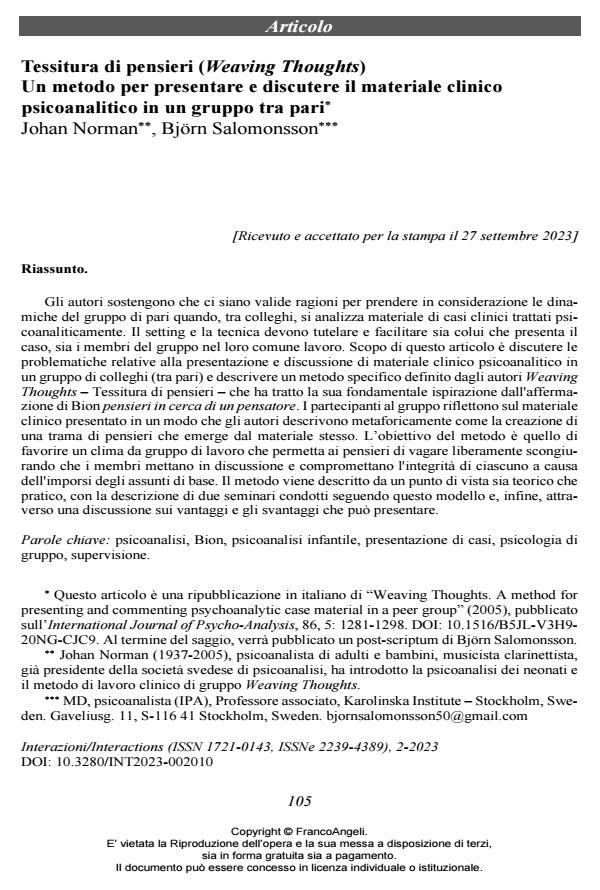Weaving Thoughts. A method for presenting and commenting psychoanalytic case mate-rial in a peer group
Journal title INTERAZIONI
Author/s
Publishing Year 2023 Issue 2023/2
Language Italian Pages 28 P. 105-132 File size 269 KB
DOI 10.3280/INT2023-002010
DOI is like a bar code for intellectual property: to have more infomation
click here
Below, you can see the article first page
If you want to buy this article in PDF format, you can do it, following the instructions to buy download credits

FrancoAngeli is member of Publishers International Linking Association, Inc (PILA), a not-for-profit association which run the CrossRef service enabling links to and from online scholarly content.
The authors argue that there are good reasons for seriously considering the dynamics of the peer group when discussing psychoanalytical case material. The setting and proce-dure have to protect and facilitate for the presenter and the group members to work to-gether. The aim of this paper is to discuss the problems connected with presenting and discussing clinical psychoanalytical material in a peer group and to describe one such specific method, which the authors call the Weaving Thoughts method. The design is primarily inspired by Bion’s formulation thoughts in search of a thinker. The group par-ticipants reflect on the presented clinical material in a way that the authors metaphorical-ly describe as creating a weave of thoughts that emerges from the material. The aim of the method is to facilitate a work-group climate that allows thoughts to wander about, and to avert group members from debating and compromising the integrity of its mem-bers by letting basic assumptions come into power. The method is described from theo-retical and practical points of view, with two illustrations of seminars according to this design and finally a discussion of the advantages and drawbacks of the method.
Keywords: psychoanalysis, Bion, child psychoanalysis, case presentation, group psycho-logy, supervision.
, Tessitura di pensieri (Weaving Thoughts) Un metodo per presentare e discutere il materiale clinico psicoanalitico in un gruppo tra pari in "INTERAZIONI" 2/2023, pp 105-132, DOI: 10.3280/INT2023-002010